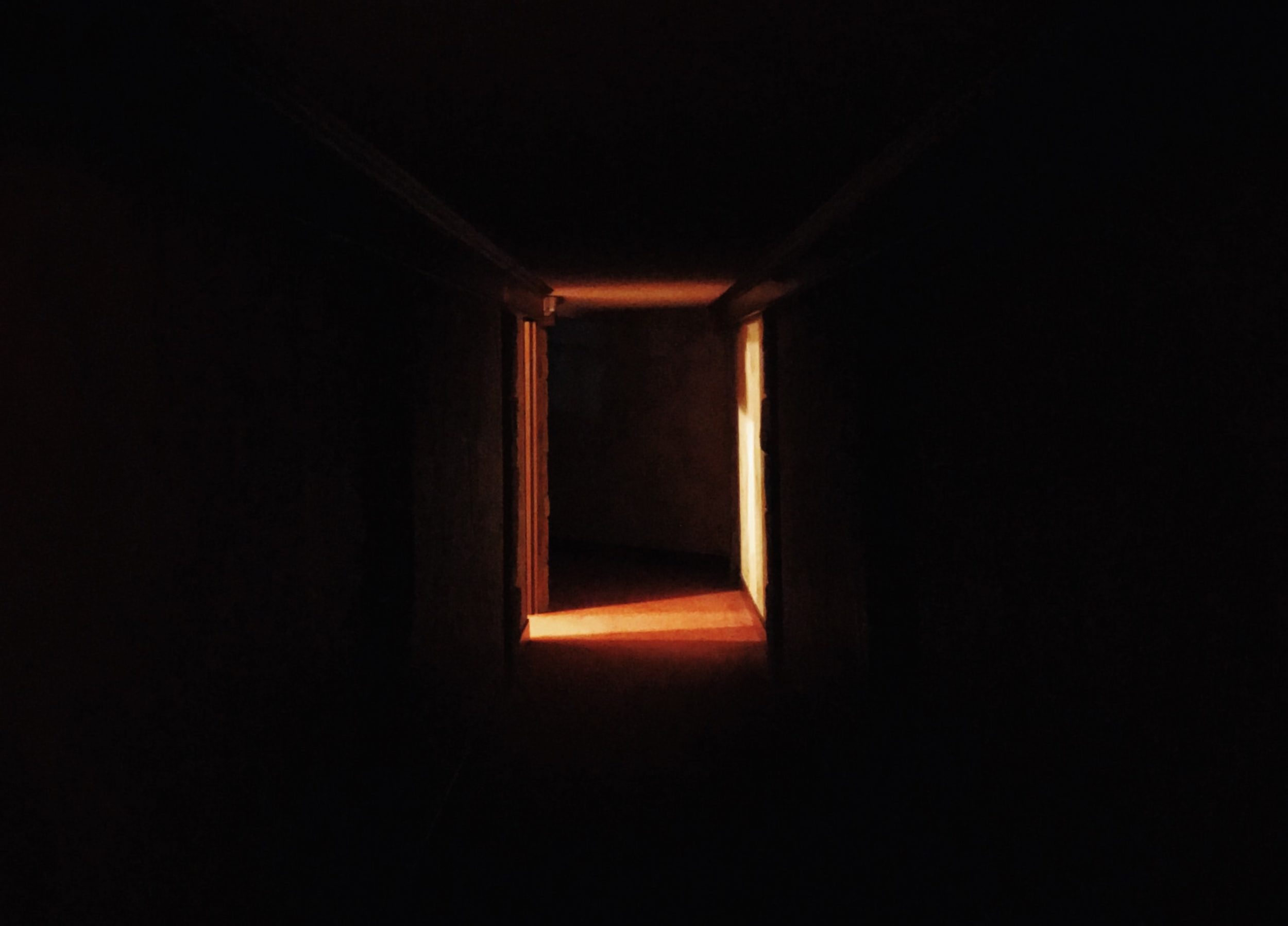You could say we are experts in the harms of solitary confinement — harms that we’d like to lay bare in hopes that they can finally be put to an end. We urge you not to look away, because the people put in the hole now may soon be those closest to you — your loved one, a neighbor, your employees, even your bosses.
One of us, Christopher Blackwell, has experienced solitary confinement, and continues to experience it, while incarcerated in Washington state, which recently imposed a watered-down ban on the practice but has refused to abandon it completely. The other of us, Jessica Sandoval, leads a national campaign to end solitary confinement once and for all, which is part of the broader effort to end mass incarceration writ large. On behalf of everyone currently locked in the hole, or who has ever been locked in the hole, we’re joining together to share a glimpse into the immediate and long-lasting impacts this barbaric practice can have on those in our nation’s prisons and jails — as well as on the communities they come home to. And to let you know what we’re doing about it.
Christopher experienced his first trip to solitary confinement at the age of 12. We call solitary confinement “the hole,” because that’s exactly what it feels like — a dark, deep place, with nothing but your own mind to get through it. It’s been more than 25 years since that trip to the hole, but the traumas inflicted there persist some 28 years later. No one sent to solitary goes there for their own good. Instead, solitary is a tool prison guards use all too freely, and with little accountability, to exert control — oppression through fear. Pervasive in jails and prisons, ICE detention centers, and juvenile facilities in the United States, as well as in some other countries worldwide, solitary confinement goes by many names, nearly all of them euphemisms the penal system uses to mask its inhumanity: restrictive housing, lockdown, isolation, room confinement, special housing units (SHU), administrative segregation, and disciplinary segregation.
No matter the name, the conditions are all the same and have been well-studied and documented: Days, weeks, months, years, and even decades spent alone in physical isolation, some 23 hours a day, with no meaningful human interaction or access to external stimuli. On top of that cruelty, there are myriad indignities. Such as routine strip searches, during which no part of your body is left untouched or uninspected. Meals served through a slot on the metal door, often small, infrequent, and served cold, or lukewarm at best. Extremely hot or extremely cold temperatures. Recreation in isolation, locked alone in a concrete box, like the ones we are housed in. The deafening screams and banging from others experiencing mental breakdown in the hole. And in the midst of all of this, hardly a normal sleep pattern. In short, conditions that inevitably can put anyone in a constant state of discomfort and despair.
So much trauma in such a limited space does irreparable harm to mind, body, and soul — even beyond the prison walls. Numerous scientific studies have warned of the poor health outcomes, increased risk of death while incarcerated and during community re-entry, and lifelong side-effects caused to those forced to endure the hole’s harsh conditions. In 2019, the Journal of the American Medical Association published a study that included 229,274 people who were released from imprisonment in North Carolina from 2000 to 2015. The findings were striking: All other things being equal, people who spent any time in the hole were 24% more likely to die within one year of release from incarceration than those released who weren’t placed in solitary; and the leading causes of death in that group, according to the study, were suicide (78% more likely) and homicide (54% more likely); those who spent time in solitary were also found to be 127% more likely to die of an opioid overdose within two weeks of release from imprisonment. Last year, Medical News Today marshalled the research on the overall health effects of time spent in the hole, and the litany of ailments run the gamut from psychological to physiological to physical. The harm, in other words, has a way of reaching a person’s whole self. And in keeping with similar conclusions by human rights experts and and international treaty bodies, an article in the Journal of the American Academy of Psychiatry and the Law reported that “isolation can be as distressing as physical torture.”
Then there’s the harm those sent to solitary pass on to their family members. This damage isn’t so easily quantified, but family members suffer dearly in their struggle to support loved ones — incarcerated or formerly incarcerated — who are or have been in the throes of solitary. Those who are currently in the hole pass on their isolation and powerlessness to those they love on the outside, who have no way of contacting them, let alone monitoring the state of their safety and health. And isolation follows the person even after they leave prison. As one expert has put it, solitary confinement forces those who have been there “to live in a world without people. And they adapt to it.” Loved ones are also made to deal with the lingering consequences that follow those who leave the hole. Like any other debilitating illness, life with someone who suffered in solitary carries its own human and medical burdens, which the state does next to nothing to help alleviate.
A dirty secret of solitary confinement is that it’s not generally used in response to the most dangerous behaviors, but it’s instead a control mechanism for dealing with minor rule infractions.
The main rationale the state offers to maintain this monstrous practice is a fig leaf: the need to maintain order. But a dirty secret of solitary confinement is that it’s not generally used in response to the most dangerous behaviors, but it’s instead a control mechanism for dealing with minor rule infractions. Reports by the Vera Institute for Justice have found that minor infractions were among the most common reason states cite to impose solitary confinement. In Illinois, for example, the overwhelming majority of people punished with solitary during a one-year period had been charged with low-level violations “such as not standing for a count and using abusive language.” And in Pennsylvania, the so-called “failure to obey an order” can land you in the hole 85 percent of the time.
Orange is the New Black author Piper Kerman, who was incarcerated in a federal prison, reported to the United States Senate Judiciary Committee that she saw many women sent to solitary confinement for at least 30 days for minor infractions — such as moving around a housing unit during a count, refusing an order from a corrections officer, and possession of contraband such as small amounts of cash or underwear other than that issued by the prison. Over the years, one of us, Chris, has been forced time and time again to experience the coldness of those cells — almost always for a so-called behavioral issue, such as disrespecting prison guards or refusing to snitch, which prison administrators hate and look to make an example from. Without oversight or accountability, and with near-unfettered discretion, they impose this additional punishment on top of the one the courts imposed.
Some jurisdictions are starting to pull back on the use of solitary confinement, especially for incarcerated youth and pregnant people. Over the last four years, at least 16 states and the federal government have enacted laws that limit or prohibit solitary confinement. But others are showing no sign of letting up. Just this last year, a number of prisons were imposing solitary confinement on their populations during COVID-19 outbreaks — not because of any offense or infraction, but out of a desire to keep people “safe” from those infected. In other words, nominal safety without any concern for how unsafe solitary is.
Policymakers at every level of government are responsible for the widespread infliction of this torture and must act with urgency to end it. Starting at the top, the president and vice president of the United States both pledged to end solitary confinement during their campaigns for the White House. They must act now to fulfill that pledge. A Federal Anti-Solitary Taskforce recently released a Blueprint for Ending Solitary Confinement by the Federal Government, laying out a detailed roadmap for how to effectively end solitary confinement and replace it with alternative program-based interventions that involve full-days of congregate interaction — which have been proven to better promote people’s well-being and safety. The Biden administration must act immediately to implement this blueprint in federal custody and incentivize states and localities to do the same.
In 2017, a group of leading anti-solitary organizations, solitary survivors, and experts working to end solitary confinement came together to form Unlock the Box Campaign, a national campaign to end solitary confinement in our carceral systems within the next 10 years. Building on years of successful advocacy, the movement is at a tipping point; a world that rejects solitary confinement is finally within reach. To move this mission forward, Unlock the Box promotes the leadership of solitary survivors and impacted communities, while engaging civil and human rights organizations, faith communities, legal and policy advocates, health professionals, researchers, elected officials, corrections staff, and the media. The campaign believes that the most promising ways to end solitary is to link state and local campaigns with the funding and technical assistance needed to increase their capacity and viability to help them thrive and succeed where it matters most: in the communities that experience the harms of solitary. We currently partner with 18 state and local campaigns that are geographically diverse, happening in big states, small states, red states, and blue states — stretching from Georgia to California. And at the national level, we’re collectively shifting the national conversation about solitary, and demanding that corrections leaders and policy makers address the human rights crisis in our carceral systems and adhere to the standards laid out by the United Nations.
Solitary confinement may be convenient for guards and prison administrators while someone is locked behind a wall or fence. But how convenient is it to have a damaged person released only to cause more damage in our communities?
And as all of these efforts are playing out, Christopher uses his perch as an incarcerated writer to expose time and again how solitary confinement leaves lasting scars — and to push for its end in his home state and everywhere else.
No one should be forced to sacrifice their soul to the system, especially in a world as advanced as ours. We have the studies; we know the harm that is being caused. Solitary confinement may be convenient for guards and prison administrators while someone is locked behind a wall or fence, but how convenient is it to have a damaged person released only to cause more damage in our communities? After all, as the adage goes, hurt people hurt people. No longer can we look away and pretend that what’s happening in solitary confinement is beneficial to anyone, including those in the free world who will inevitably interact with formerly incarcerated people. Ending solitary confinement is a reform that is needed to protect us all. It is also a necessary precursor to ending our reliance on prisons, which have proven time and again to be drivers of illness and death, both inside and outside their walls — a reality that’s only made starker by the pandemic.
Image: Unsplash


